Nobel Laureate Tomas Lindahl: “I had an excellent group at KI”
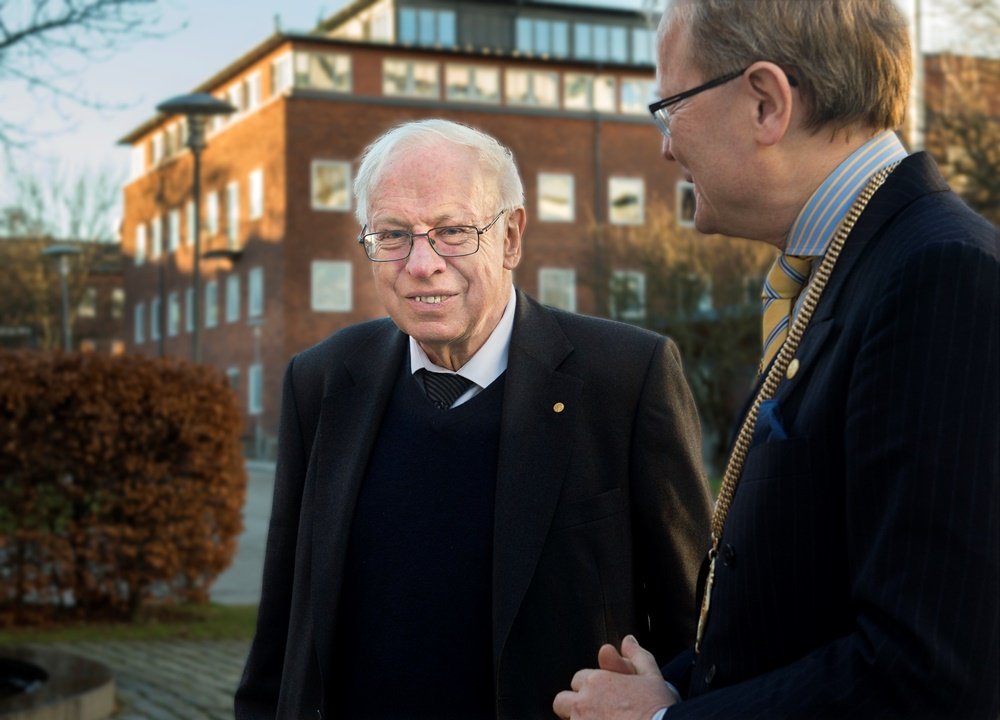
Nobel Week is soon to come, bringing together all the Nobel Laureates in Stockholm. One of them, Tomas Lindahl, one of this year's three Nobel Laureates in Chemistry, made many of his pioneering discoveries at Karolinska Institutet.
It was here, in a basement laboratory in the 1970s, where he shows that DNA is not as stable as once thought and describes a mechanism for how cells repair genetic damage. His colleagues at the time describe a generous, thoughtful person. Tomas Lindahl himself recalls his time at KI as stimulating and stresses the importance of a good laboratory atmosphere.
“I remember him sitting there in the lab holding a paper chromatogram. ‘Why this…this is uracil!’ We knew it didn’t fit in with what he was looking for, but had no idea just how far the find would take us,” says Stefan Söderhäll, one of Tomas Lindahl’s first doctoral students.
It’s the early 1970s. The ground floor of the then chemistry block, where daylight filters down from the ceiling windows, is where Tomas Lindahl has his lab. He has recently arrived at KI. He has studied medicine and holds a PhD but his doctoral thesis was partly written at Princeton University in the USA, after which he did his postdoctoral research at Rockefeller University.
“His time in the US gave him top publications and training in advanced research techniques,” says Professor Emeritus Peter Reichard from KI’s Department of Medical Biochemistry and Biophysics. “I was the medical representative on the Swedish Natural Science Research Council back then, and thought Sweden would benefit greatly from his remaining at KI. Tomas applied for a research post on my advice and had it located here.”
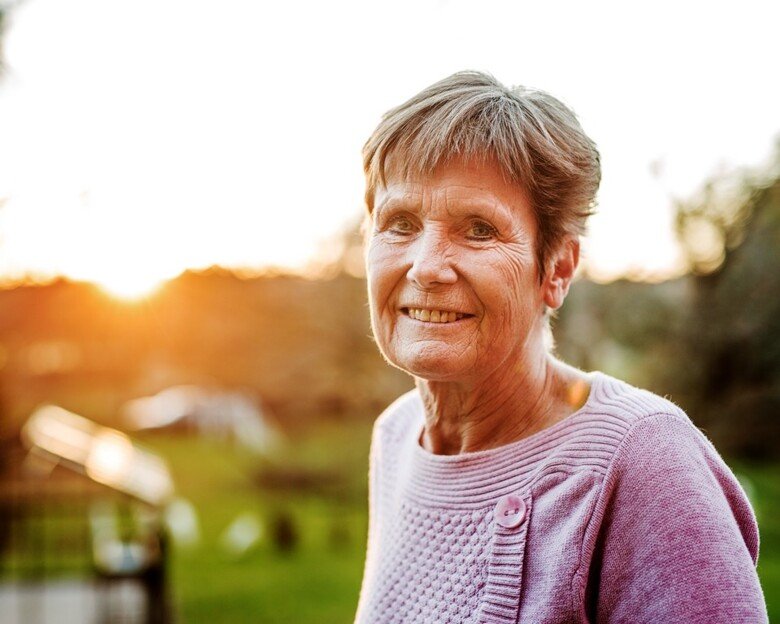
At this time, science assumes the DNA molecule, which is the basis of all life, to be extremely durable. Anything else would be unthinkable. But during his postdoc period in the US, Tomas Lindahl discovered that RNA, the molecular cousin of DNA, is easily broken down by heat. This made him wonder if DNA was really so stable as everyone thought. Three years later, as an independent researcher at KI, he starts to search for an answer.
In the early days there is just Tomas Lindahl and his lab assistant Barbro Burt (then Nyberg). Together they build up the little lab.
“The relationship between a researcher and a lab assistant was different back then,” she recalls. “Not as free-spoken as it is today. He was the one who called the shots, but he was modest and great in that role.”
Cared about his co-workers
She remembers Tomas Lindahl as being a man who although strict in his manner showed through his gestures that he cared about his co-workers. “He helped me to get a raise, for example. Wrote letters to KI telling them that I was a good worker and woefully underpaid. Not everyone does that! He was considerate and generous.”
Barbro Burt can often be found standing wrapped in furs in the refrigeration room cleaning enzymes from slaughter tissue. DNA is new to her, but Tomas Lindahl teaches her and tells her what his work is all about. The job is varied and enjoyable. On a couple of the first articles en route to the now prizewinning DNA repair mechanism, she and Tomas Lindahl are listed as the sole authors.
“It wasn’t common for the lab assistant to be listed in a paper,” she says. “I didn’t think back then what significance the results could have, but now I realise that a lot of what I worked with is still relevant.”
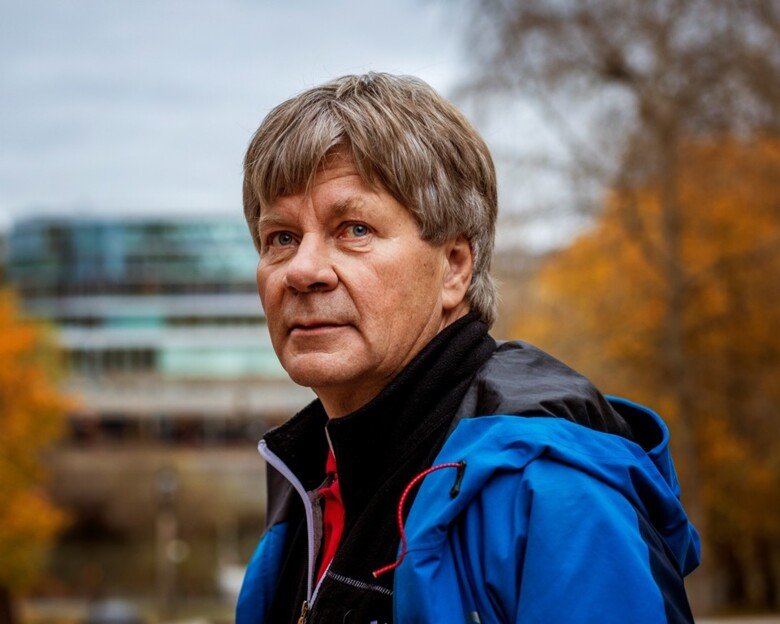
The first doctoral students gradually arrive. Stefan Söderhäll joins them in 1971.
“Tomas left us pretty much alone,” he says. “He was there, accessible, helped in the planning and was interested in our results, but he was never on our backs. But, sure, we worked hard.”
Tomas Lindahl often arrives at ten and remains after everyone else has left the lab, which at first doubles up as his scriptorium. Stefan Söderhäll describes him as pensive, friendly and generous. His generosity is evident in the way he promotes his co-workers. One of Stefan Söderhäll’s research papers was accepted by the prestigious journal Nature. While the practical work he had done himself, Tomas Lindahl had advised him and helped with the writing:
“Tomas could have demanded to be included on the list of authors since he was my supervisor. The kind of generosity Tomas showed in doing that is rare, both then and now.”
He continues: “I was overjoyed when I heard he’d been awarded a Nobel Prize. Not just because I know him, but because he’s made an impact without being academically pushy. Without trying to ruthlessly secure resources at someone else’s expense and by more or less fair means. It pleases me that sheer competence is enough.”
Siv Ljungquist joins Tomas Lindahl in 1971 with her honours degree project. She likes it there and stays on to do her PhD.
“We worked very independently,” she says. “I set up my methods and got down to it. He provided the main framework and did so pedagogically. After that it was up to me to use my own head and read a lot.”
Absorbed in his research
Tomas Lindahl was rather reticent and absorbed in his research, recalls Siv Ljungquist, but there was also a twinkle in his eye. She also sees him as being considerate to his co-workers – publication successes are celebrated with a bottle of wine and every Christmas the group has dinner in town or at his home: “We’d also go out to the island of Utö. We’d swim, eat, the kids were there too. It was really nice and relaxed. His personal side tended to come out more when we were outside the lab.”
When Siv Ljungquist is a relatively new doctoral student, Tomas Lindahl gets invited to hold a lecture at a DNA repair meeting in Prague. He is prevented from going, however, and asks her to take his place. Once there, she finds out that she is also required to be a session moderator.
“I was a nervous wreck,” she says. “No one had told me. I guess they thought I’d take it for granted. You had to be assertive, that was all there was to it. Tomas raised us to take initiative.”
Important papers published during Tomas Lindahl’s time at KI (1969–1978)
- Lindahl, T. and B. Nyberg, Rate of depurination of native deoxyribonucleic acid. Biochemistry, 1972. 11(19): s. 3610-8.
- Lindahl, T. and A. Andersson, Rate of chain breakage at apurinic sites in double-stranded deoxyribonucleic acid. Biochemistry, 1972. 11(19): s. 3618-23.
- Lindahl, T. and B. Nyberg, Heat-induced deamination of cytosine residues in deoxyribonucleic acid. Biochemistry, 1974. 13(16): s. 3405-10.
- Lindahl, T., An N-glycosidase from Escherichia coli that releases free uracil from DNA containing deaminated cytosine residues. Proc Natl Acad Sci U S A, 1974. 71(9): s. 3649-53.
- Lindahl, T., New class of enzymes acting on damaged DNA. Nature, 1976. 259 (5538): s. 64-6.
Over the phone from the fashionable north London borough of Highgate Tomas Lindahl reminisces about his time at KI 40 years ago:
“I had an excellent group at KI. Barbro, Siv and Stefan were also extremely helpful and lovely people. It was a good time. I had a little teaching and no real pressure on me to produce. All I had to do was try to come up with something new.”
And he did. In 1972 he and Barbro Burt show that DNA is not as stable as previously thought, but disintegrates naturally at a rate that should have made evolution on earth impossible. He shows that the nitrogen base cytosine in DNA easily loses an amino group to become the base uracil. If the flaw remains, a mutation will appear the next time DNA replicates. Tomas Lindahl concludes that cells must be able to counteract such damage.
Outlines the fundamental concept
In a study published in 1974 he identified the enzyme uracil-DNA glycosylase in e. coli, which finds and removes the faulty uracil base. It is in this paper that he outlines the fundamental concept for the now Nobel prizewinning repair mechanism, base excision repair, which he goes on to describe later.
“It was thrilling,” he says. “I can’t pinpoint when, but it gradually dawned on me that we’d found something new and deeply significant.”
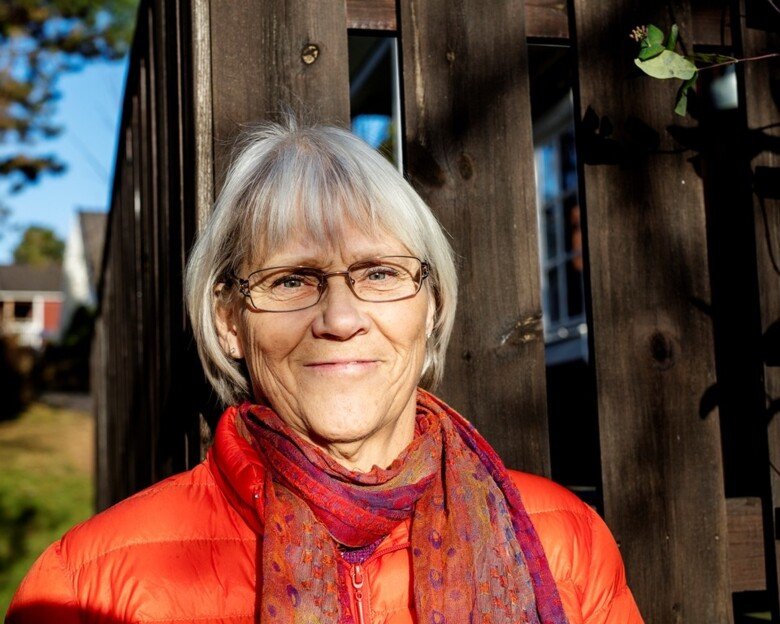
Successful publications are celebrated with a bottle of wine or champagne. Everyone involved is to feel proud of the achievement, and everyone is acknowledged for their part in it; this is important to Tomas Lindahl.
“Barbro Nyberg was extremely good at doing research. It’s very important to be as meticulous as she was, and perfectly fair that she is listed on the papers,” he says.
Being generous to his co-workers and helping them up the career ladder is also behind his strategy of sending doctoral students out to conferences as soon as they are ready. Whoever has done something good must show it to the wider scientific community. It is the same with co-authorship.
“Back then, doctoral students needed papers on which they appeared as sole authors in order to get their own research posts. Since I had such good students it would’ve been bad form to put my name to each article. And I still did OK, anyway.”
Open to unexpected outcomes
Tomas Lindahl is often portrayed as methodical and determined in his research. He recognises this picture of himself but adds that it is also important to be open to unexpected outcomes.
“That’s sometimes the most stimulating thing about research,” he says. “That you don’t just routinely churn out data but have to look at what you produce and think to yourself, ‘Does this tell me anything, am I wrong?’”
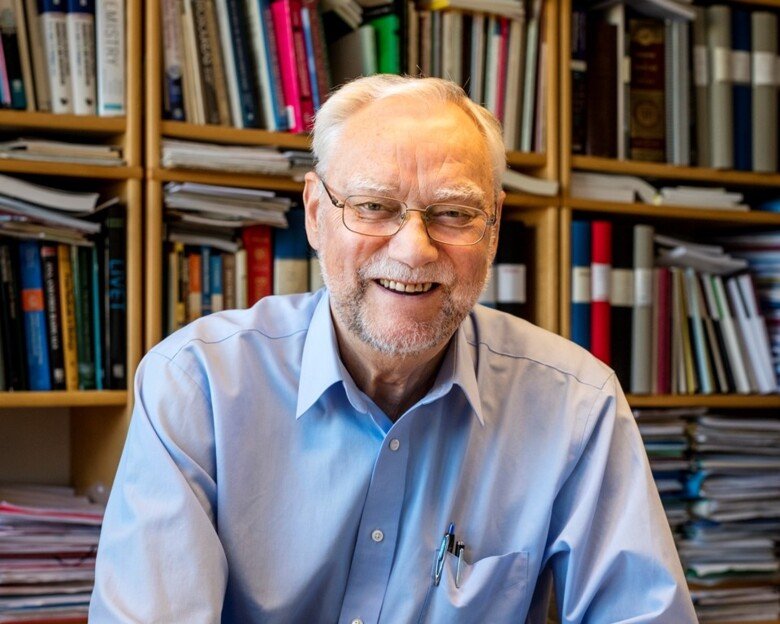
Arne Holmgren, professor at the Department of Medical Biochemistry and Biophysics at KI, was leading a group in the same block as Tomas Lindahl at the time, and shared some of the equipment. He describes Tomas Lindahl as amicable, easy to work with and a respected scientist.
“We knew that he was doing good research, but perhaps not that it would be this big,” he says.
At KI, Tomas Lindahl is driven by the idea of working in an exciting field and with stimulating senior colleagues. His great role model is Peter Reichard, who was a professor at the same department and subsequently head of the biochemistry section of the Medical Nobel Institute at KI.
“He built up an extraordinarily fine department, had excellent co-workers and solved scientific problems that I’m a bit disappointed he hasn’t been awarded a Nobel Prize for,” he says. “He inspired me greatly and I tried to emulate him in my own research.”
In what way?
“He had interesting novel ideas and an authority in the lab. He was a very skilled researcher. When you hear a great musician play their instrument, you know that that is how it’s done. I got the same feeling with his research.”
Like today, research funding was difficult to obtain. Tomas Lindahl says he got by on his research salary, but his group remained small: “I’d wanted to grow it a bit, but there was rivalry within the department and the researcher I competed with was an enterprising administrator and good at securing funds, much better than I was.”
Nine years later, in 1978, he leaves KI. A professorship in medical and physiological chemistry has been advertised at Gothenburg University and Tomas Lindahl says that the research position gave him no choice but to apply. Four years later he moves to London, where he establishes the successful Clare Hall Laboratories.
What did you take with you from your time at KI?
“That you need a friendly and helpful atmosphere in the lab. If you’ve got that, a lot of other stuff comes naturally.”
How do you create a good atmosphere?
“By having luck, backing the right people and setting an example. It’s important to be generous. There are examples of the opposite – tyrants who have produced great results by applying the whip to their co-workers. That’s not how I want to go about things.”
Text: Sara Nilsson
Photo if no other information: Gustav Mårtensson
© The author and KI Bladet/KI News.
Featured in the article were
Barbro Burt (then Nyberg). Laboratory assistant in Tomas Lindahl’s group at the Department of Medical Chemistry II 1969–1978.
Stefan Söderhäll. Paediatric oncologist and researcher at the Department of Women’s and Children’s Health at KI. Doctoral student in Tomas Lindahl’s group at the Department of Medical Chemistry II 1971–1976. Graduated with a PhD in 1976.
Siv Ljungquist. Researcher in Tomas Lindahl’s group at the Department of Medical Chemistry II 1971–1977. Firstly for an honours degree project, then as a doctoral student. Graduated with a PhD in 1977.
Peter Reichard. Professor emeritus, Department of Medical Biochemistry and Biophysics at KI. Was a professor at the same department as Tomas Lindahl, but left in 1970 to lead the biochemistry section of the Medical Nobel Institute at KI.
Arne Holmgren. Professor at the Department of Medical Biochemistry and Biophysics at KI. Led a research group at the Department of Medical Chemistry I and shared certain equipment with Tomas Lindahl (1973–1978).
Facts about the Nobel Prize in Chemistry 2015
Emeritus group leader at the Francis Crick Institute
Name: Tomas Lindahl
Age: 77.
Home: Highgate, north London. “It’s a pleasant area full of old houses. Not unlike Bromma, where I grew up as a child.”
Family: Two children, both living in the USA, and grandchildren. Has been the partner of tumour virologist Beverly Griffin for the past 35 years.
Positions: Emeritus group leader at the Francis Crick Institute, which is under construction in central London, and emeritus head of Cancer Research UK at Clare Hall Laboratory, outside London. He is also senior scientific advisor for IFOM, a research institution for molecular oncology in Milan.
Free time: Music. “London has an exceptionally rich concert scene. I like to listen to chamber music at the Wigmore Hall, for example. I’m also interested in wine. I did a little wine-tasting when I was at KI with some colleagues and wrote reviews.”
The discovery of DNA repair leads to new cancer treatment
- The 2015 Nobel Prize in chemistry was awarded jointly to Tomas Lindahl, Paul Modrich and Aziz Sancar for having mapped, at a molecular level, how cells repair damaged DNA and safeguard the genetic information. Tomas Lindahl’s contribution concerned the discovery of a molecular mechanism, base excision repair, that repairs DNA when a nitrogen base in the molecule has been damaged.
- Firstly, an enzyme called glycosylase finds the flaw and cuts away the damaged base. A couple of other enzymes then remove the residue, the gap is filled with a correct base and the strand is glued together by yet other enzymes. The discoveries have provided fundamental insight into how cells operate, knowledge that can help scientists understand the ageing process and develop new cancer therapies.
- One drug that is based on Tomas Lindahl’s discovery is olaparib, developed by Professor Thomas Helleday at KI’s Department of Medical Biochemistry and Biophysics. The drug kills tumour cells by blocking one of their DNA repair enzymes and has been approved for the treatment of ovarian cancer.
